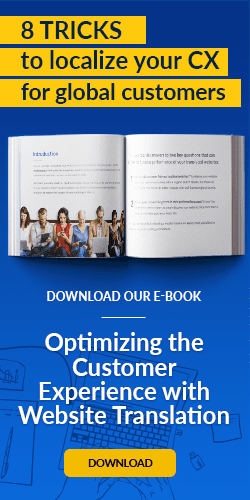The European Commission recently issued a proposal to ban geo-blocking, a common online practice in which companies limit access to their international websites based on a user’s geographic location. This prevents consumers from buying products and services in other countries, where they might have lower prices.
One of the best-known examples of this price discrimination is the “Australia Tax.” In Australia, local prices on some products can be as much as 88% higher than in other markets.
The Commission, which is the executive body of the European Union, decried the practice as anticompetitive, particularly within the EU. “In the online world, all too often consumers are blocked from accessing offers in other countries,” it said in a statement. “Such discrimination has no place in the single market.”
According to a 2015 survey conducted by the Commission, more than 60% of EU-based retail websites geo-block customers. Nearly half of those sites provided no upfront information about the companies’ delivery restrictions, or other geo-based restrictions.
At its simplest, the Commission’s recent proposal would prevent geo-blocking, optimize cross-border parcel delivery, and reduce discrimination of regionally-preferred payment methods.
Most consumers understandably bristle at geo-blocking. So do consumer advocates. “We are now living in a global village that’s supposed to resemble a level playing field—a single digital market would empower businesses and boost growth in the global economy,” wrote one technology blog.
But is the practice as anticompetitive as the Commission insists? We recently spoke with Francesco Rocchi, a Global Online Strategist with our Global Growth team, to learn more.
It’s About Money
An EU without geo-blocking would certainly create growth in the region. Nearly 70% of EU-based Internet users now shop online. In 2014, online commerce in the EU was worth €368 billion ($414 billion). And while domestic e-commerce will grow by around 14% in the next two years, cross-border revenue will surge by 40%—a projection that doesn’t factor the Commission’s proposal, should it successfully pass. (Approval is projected to happen next year.) One-fourth of respondents to an Accenture study believed that they could grow revenues by at least 25% if they could sell online and cross-border in Europe. Some are already shifting “to a more offensive position aimed at tackling the cross-border challenge in Europe,” the report found.
With over 90% of EU consumers supporting “single market” cross-border e-commerce and retailers also warming to the notion, why is geo-blocking still so common in the region?
It’s all about companies obtaining the maximum possible margins in their respective markets, Francesco explains.
"Let's say a retailer offers a particular product on its Dutch e-commerce site for €50," he says. "And now let's say the same retailer offers the same product for €30 on its website serving Poland. The price is lower due to several economic factors. But Dutch customers understandably want to save money and buy from the Polish site-but if that happens, the retailer will lose €20 on each Dutch sale."
Hence, geo-blocking. Even when Dutch customers try to access the Polish site directly, they will be sent to the retailer's Dutch site via a "hard redirect." Profits are preserved.
A Win-Win Scenario
Francesco sees a way that businesses can maintain control over their local-market pricing, while eliminating geo-blocking and serving all EU consumers.
"A company serving multiple European markets is clearly interested in channeling consumers to the optimal versions of its website," he says. "And by 'optimal,' I mean not only the appropriate site that maximizes their margins, but also provides products that are most relevant to those shoppers."
For instance, take a grocery e-retailer, Francesco says. Italian customers will be probably interested in seeing homepage deals on spaghetti, while German customers will probably prefer seeing specials on pretzels. All consumers will prefer seeing this content in their languages of choice.
However, the Commission's proposal does not prevent market-specific price discrimination (or "price localization," as we call it), Francesco says. "They're proposing that customers receive unfettered access to a company's websites serving nearby markets," he explains. "But retailers can still use geo-targeting to display a price that's appropriate to foreign shoppers."
This ensures the playing field remains level for businesses across multiple markets, while consumers are empowered to conduct cross-border transactions, in their preferred languages, if they wish. It's a win-win.
"If a company can drive a high percentage of their customers to the desired local version of a site, it will greatly benefit in terms of conversion rate," Francesco says, "since people prefer to shop and purchase in their language of choice. Average margins and returning traffic are likely to increase, too."
The Consumer-Friendly Path
Companies can achieve this consumer-friendly shopping experience through several key initiatives, Francesco says:
- Offering market-specific versions of their websites in locally-preferred languages, to boost traffic, engagement and conversions
- Generating organic traffic to the appropriate market website, through translated site maps, and the proper linguistic “hreflang” tagging for search engines
- Providing “soft redirection” opportunities to direct customers to the appropriate local website (rather than the alienating hard redirects currently in use)
- Optimizing the user experience on the localized website, to incentivize customers to remain on-site. (“This can be achieved through localized campaigns, content, inventory, and more,” Francesco says.)
MotionPoint’s Globalization Platform offers a suite of technologies to help companies deploy these improvements, Francesco says.
From scalable translation solutions, to traffic-boosting Global Sitemap technologies, to “soft redirection” solutions such as EasyLink® and more, MotionPoint’s platform empowers companies to smartly increase cross-border traffic and sales in the EU—and beyond.
Last updated on June 22, 2016
